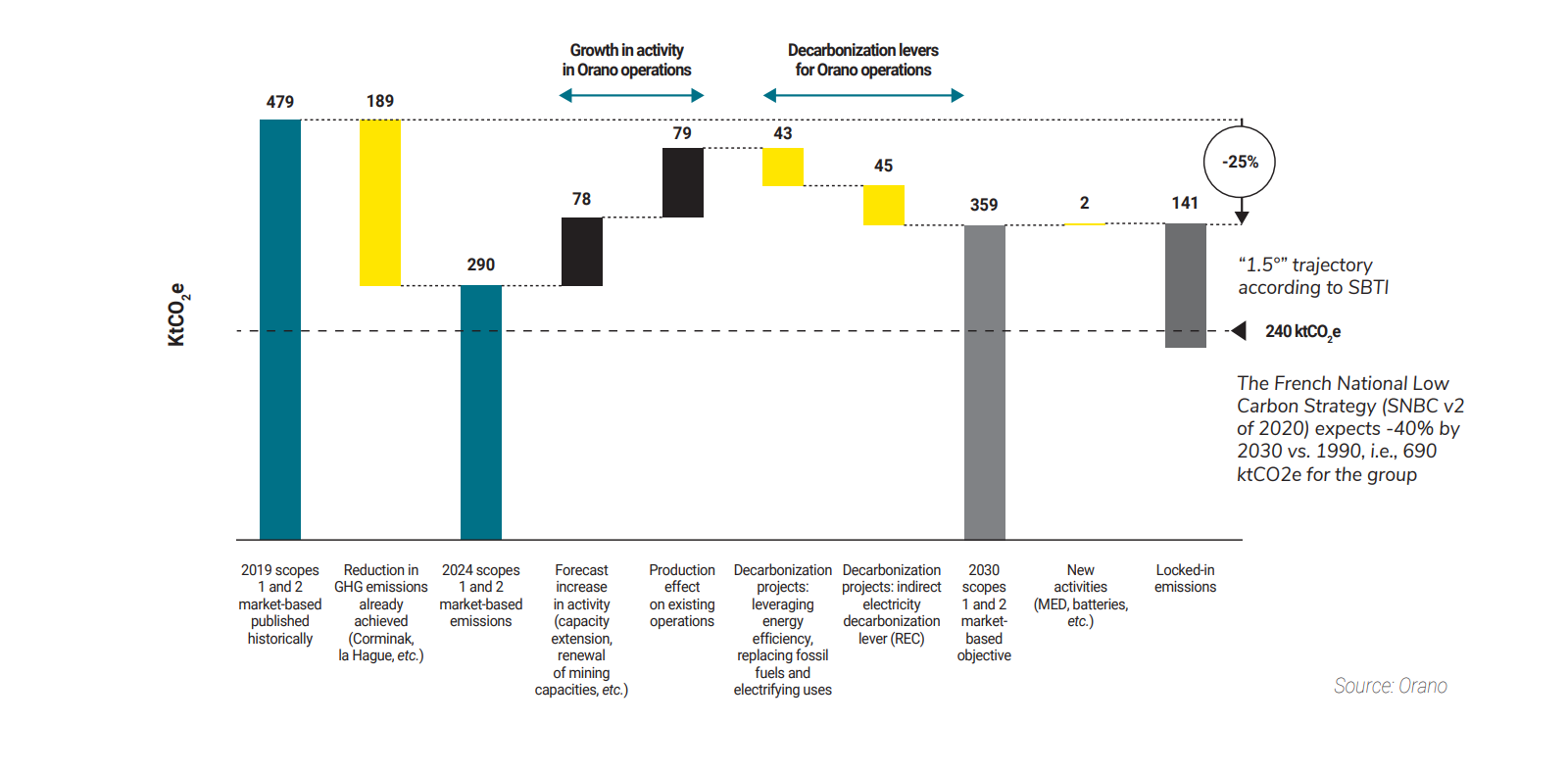
Energy & Climate

Contribute to carbon neutrality by reducing greenhouse gas emissions across all three scopes.
In terms of mitigation, the group is targeting three objectives by 2030:
- achieve in terms of energy performance the equivalent of 10% of our consumption for 2019 (190 GWh)
- maintain -25% on scope 1 and 2 market-based1 GHG emissions in 2030 vs 2019
- bring the 80 most emitting suppliers on board in the reduction of their emissions
1According to the international "GHG Protocol" standard, indirect emissions from electricity consumption (Scope 2) can be accounted for using two methods: (i) the location-based approach, which considers the average emissions associated with electricity production in the area where it is consumed (for example, the average energy mix in France), and (ii) the market-based approach, which considers the contractual instruments chosen by the company (such as direct purchases of renewable electricity, purchase of renewable energy certificates, etc.). The group's target focuses on Scope 1 and Scope 2 market-based emissions.
Improve the energy efficiency of our operations
Orano takes steps to ensure energy economy and efficiency. For instance, it:
- performs comprehensive audits of its energy-intensive sites and obtains ISO 50001 certification for major sites;
- uses energy-management software to measure consumption better and identify areas for improvement;
- improves the efficiency of energy-intensive equipment such as motors.
Our results for 2024
- 91 GWH of identified performance
- 12% reduction in energy consumption since 2019
Reduce our scope 1 and 2 greenhouse gas emissions in line with the Paris agreements
The Group reduced its emissions by 57% between 2004 and 2019. The Group has set an objective of an additional 25% reduction between 2019 and 2030, focusing its efforts in four areas:
- energy-management actions that will also help reduce Scope-1 and -2 emissions;
- decarbonization of very high-carbon electricity mixes in countries where we operate;
- electrification of operations;
- reduction in refrigerant leakages and process emissions.
Scopes 1 & 2 GHG emissions (ktCO2e)

Our results for 2024
- 290 ktCO2e GHG footprint for Scopes 1 and 2 market-based, a reduction of 40% since 2019
Undertake to reduce the group's Scope 3 emissions
Orano has been quantifying the carbon footprint within the value chain (known as Scope 3), since 2019. It represents 87% of the Group’s total footprint. Most of the impact is upstream of our operations, mainly from the purchase of goods and services and capital assets.
The working group leading this topic is focusing its efforts in three areas:
- improving the measurement of Scope-3 related emissions, in particular by identifying accurately Orano suppliers’ emission factors and by increasing the proportion (until now below 50%) of the balance calculated using physical data;
- adopting a common approach with the main suppliers to reduce the impact of the activities they carry out on the Group’s behalf;
- continuing with eco-design work: a dedicated working group has been set up including all those involved in Group projects. One of its objectives is to help construct an efficient approach to decarbonization.
Orano decarbonization targets

Our results for 2024
The group adopts a Responsible Purchasing Policy that structures its actions 170 suppliers surveyed about their decarbonization ambitions 10 SMEs supported.
-
Responsible Purchasing Policy 2024-2026Download
Adapt our industrial activities to current and future climate change
Orano is fully aware of the need to adapt our activities to climate change. Since 2021, it has been assessing the risks and opportunities related to physical and transition risks, in compliance with the Task-Force on Climate-Related Financial Disclosures (TCFD) standard.
The physical risks related to climate change have been analyzed up to 2050 based on emission scenarios RCP-4.5 and RCP-8.5. The impacts identified were moderate and are being managed as part of an adaptation plan.
Different scenarios

Scenario with very low emissions with a culminating point before 2050. This is the most optimistic scenario.

Scenario with stabilization of emissions at a low level before the end of the 21st century.

Scenario with stabilization of emissions at a medium level before the end of the 21st century.

No changes are made. GHG emissions continue to increase at the current rate. This is the most pessimistic scenario.
Our 2024 results
- Nearly 100 adaptation actions identified through the internal DARWIN program
-
See the analysis of the Group’s physical and transition risksDiscover
The nature of its activities, which enable the delivery of low-carbon, manageable, competitive and safe electricity, means that the effects of climate change are, in terms of transition, mostly opportunities for Orano. The contribution of Orano’s activities to a low-carbon world is demonstrated by the strategic directions it has taken in the past, one of which is, importantly, the climate. This commitment is evident today in its purpose, and, in practical terms, in its investment in research, development and innovation in technologies for decarbonization and resource conservation.
Innovate for the climate and for resource conservation
Orano has made the climate and the conservation of resources central to its purpose and its strategic directions.
The Group has always been involved in the circular economy, both throughout the nuclear-fuel cycle and in reprocessing spent nuclear fuels in its La Hague and Melox plants. This solution allows us to reduce the quantity and radioactivity of the waste.
The Group is exploring and developing new models in the following areas: the circular economy for rare and strategic resources; the transition and modernization of industrial models; the control of complex materials and the reduction of their impact; health ecosystems; carbon neutrality; and the reduction of the environmental footprint.
-
@Orano InnovationFind out more